|

|
House of Lynn |
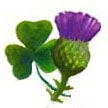
|
The Widney
/ Udny
Family of Scotland and
Ireland
Copyright 2014
:
Revised 10 July 2020
Loretta
Lynn
Layman, Author of "Barony of Lynn", The
Scottish Genealogist,
Vol. LVII No. 1, The Scottish Genealogy
Society, Edinburgh (March 2010)
Lynneage @
comcast .
net
________________________________________
Genealogy of the Widney / Udny Family of Scotland and
Ireland
________________________________________
Colonel Widney and the Family in Ireland
Through
the End of the Eighteenth Century
Note:
A photocopy of a document described
elsewhere as a 1744 lease was
examined
by this author and discovered to be a 1744 "memorial",
registered in 1745,
of a deed dated 11 May 1724 .
The memorial, the handwriting
of which is easily readable,
bears the sworn affidavit of one of the
witnesses to the original 1724 deed.
Map and Geographical Notes
________________________________________
Background
Between the years 1784 and 1788, two related families
left Ulster, Ireland for Franklin County, Pennsylvania.
They were the family of James Widney and Ann Erwin and the
family of Sarah Widney and Hugh Linn.
James and Sarah were brother and sister.
In the mid to late 19th century, various bits of the history of these two
families were dictated
to Dr. George Wilds Linn by three of his elders: (1) his paternal grandfather, Hugh Linn II, who was
three years old when he arrived in Pennsylvania with his
parents; (2) his paternal grandmother, Ann
(Widney) Linn, granddaughter of James and Ann (Erwin) Widney and wife of Hugh Linn II; and
(3) his aunt Jane Widney, daughter of James and Ann.
Based on the memories of these elders, the origin of the Widneys in Ireland was described by Dr.
Linn as follows ...
| |
"The Widneys were descended from a Colonel Widney, an
officer in the army of William the Prince of Orange of
Holland.
He accompanied the Prince to England in the year
1688, and in the following year was with the army under the
Duke of Schomberg in the campaign against King James II.
He was at the battle of the Boyne, July 11th,
1690, and subsequently received from the crown for his
services a considerable estate in County Tyrone, which was
handed down to his descendants."
A History of a Fragment of the Clan Linn,
Dr. George Wilds Linn (1905), pp. 22-23
|
|
Descendants of the Linn and
Widney families are far more fortunate than many in search of ancestral origins. It is rare to have someone so close to an
immigrant ancestor who was interested and diligent enough to
preserve for posterity the knowledge and recollections of their
antecedents. For that, we owe a large debt of gratitude to Dr.
Linn.
At least two questions arise from the above account.
First, did Dr. Linn's elders tell him specifically that
Colonel Widney had come to Ireland
from Holland [the Netherlands], or
simply that he had fought for William of Orange at the Boyne,
from which Dr. Linn then
inferred the former? This
question, unfortunately, cannot now be answered.
We would be remiss, however, if we did not consider certain
historical data of which Dr. Linn likely was unaware.
Not least is the fact that the armies of William of Orange at
the Boyne included not only his own Dutch Army but also regiments from Scotland,
Ireland (including Ulster Scots), England,
France, and Denmark.
http://www.keepmilitarymuseum.org/boyne.php?&dx=1&ob=3&rpn=boyne&sid=2cf51d5abc93002d7b3807427eed2b49
The second question presented by Dr. Linn's account is this: does there
exist any documentation and confirmation of any of its parts?
In order to discover the answer to this question, it is
necessary to recognize other spellings of the family name.
As cautioned elsewhere, a general lack of consistency in the
spelling of surnames existed throughout the English-speaking world,
even into the nineteenth century.
Thus, as recognized by Widney descendants, the Widney surname is
sometimes written Woodnay or Woodney. As will be seen, the
interchangeability of Widney, Woodnay, and Woodney is borne
out in Irish records.
However,
the origin of the name Widney is even older and reveals an older spelling. One
1875 historical account describes the parish of Udny in Aberdeenshire, Scotland:
"The name has been spelled Widney and Uldney, and
it
derives its name from the barony and family of Udny of Udny, who
have possessed the estate for several generations ..."
The
earliest the family is found in extant records of Aberdeenshire is 1
October 1498, when William Udny was listed in grants of friars'
lands of Kintore.
New History of Aberdeenshire, Part II, Alexander Smith, Ed. (1875)
Fasti
Academiae Mariscallanae Aberdonensis (Selections from the Records of
the Marischal College and University) MDXCIII-MDCCCLX, Vol. I,
Comp. James Fowler Kellas Johnstone, Edit. Peter John Anderson,
M.A., LL.B., Aberdeen (1889), p. 95: fn *
Widney in fact is the phonetic spelling of Udny.
Native Scottish folk singer Jock Duncan has this to say in reference
to a song about the Aberdeenshire
town of Udny on his CD "Ye Shine Whar Ye Stan!":
"I've heard many versions o it -
an tunes an aa, fen I wis young. Widney wis the pronunciation. Never
naebody heard o Udny: 'It's Widney boy - are ye gaun doun tae Widney
the nicht?'"
http://www.springthyme.co.uk/1039/
-
Find
"8:
Udny" on the page and see the comment by "Jock".
Clearly, Widney is one of the variant forms of the Scottish name
Udny.
Is there anyone of the
name Udny with connections to both Ireland and the Netherlands?
As reported
by Rev. George Hill in his 1877 history of the plantation of Ulster
(and outlined below), one man named Udney
acquired property in Ireland in the early seventeenth century, but in County Cavan rather than
Tyrone. As will be seen, this man also supported the Dutch,
although a
generation or two earlier than the Battle of the Boyne. These
facts, of course, do not preclude the existence of a Colonel Widney
fighting at the Boyne.
An examination of all available records is necessary in any case.
Here, then, is a chronology, with sources, of the family of
Widney/Woodney/Udny. It begins
with a man from Scotland who fought for Holland and ended up in
Ireland.
________________________________________
Chronology
Chronology
|
1593
|
On 18 September, Olipher [Oliver] Udny was named in a complaint
concerning a house in connection with Marischal College and
University of Aberdeen, Scotland.
Fasti Academiae Mariscallanae Aberdonensis (Selections from
the Records of the Marischal College and University)
MDXCIII-MDCCCLX,
Vol. I, Comp. James Fowler Kellas Johnstone, Edit. Peter
John Anderson, M.A., LL.B., Aberdeen (1889),
p. 95: fn **
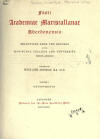
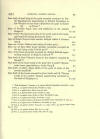
|
|
1596
|
On 13 January, Oliver Udnie, Burgess of Aberdeen, Scotland, served on
a jury of inquest, as recorded in the Sheriff Court Diet
Books, Vol. V.
Records of the Sheriff Court of Aberdeenshire,
Vol. I, Records Prior to 1600, David Littlejohn, LL.D., Ed.,
Aberdeen (1904), p. 345
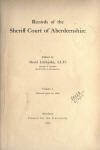
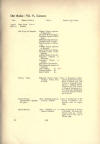
|
|
1607-
1610
|
Oliver Udny/Wodney served as Captain of a company in the
Scots Brigade in the
service of the
United Netherlands, as follows:
1607 - On 16 May, Oliver Udny took
the
oath as captain of the company
previously commanded by Colonel Brog.
1608 - Oliver Wodney was paid
£1,290 as captain of a company of 94 men.
1609 - Oliver Wodney was paid
£1,059 as captain of a company of 70 men.
1610 - Oliver Wodney again was paid £1,059 as captain of a company of 70 men.
1610
-
On
23
October,
Captain
Udny
was
succeeded
by
an
officer
named
Ramsay.
The Brigade account regrettably
does not include any reassignment, discharge, or other
record of any kind for Oliver Udny/Wodney. However,
the editor of the 1899 history of the Scots Brigade in the
service of Holland noted that Oliver was "[p]robably a
member of the ancient family of Udny of Udny in
Aberdeenshire".
Papers Illustrating the History of the Scots Brigade in the
Service of the United Netherlands 1572-1782,
Vol.
I
1572-1697,
Ed. James Ferguson,
Edinburgh
(1899),
pp.
72,
74,
227.
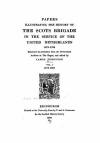
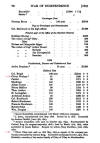
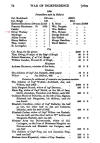
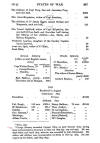
It is certain that Oliver was Scottish and that he was
in service to The Netherlands; and then ...
|
|
1621
|
On 1 April,
Oliver Udny was leased part of the townland of Cran1
in the manor of Kilcloghan, barony of Clankee, County Cavan,
Ireland.
This was
during the first plantation of Ulster, which included large
numbers of Scots settlers, many of whom had served the Crown
in the military. Kilcloghan had been granted to the
Scotsman John Hamilton, Esq., whose
lessees were described in Pynnar's
1619 survey of the plantation as "of Brittish birth
and descent", a term that included Scottish, English, and
Welsh.
Cavan shares part of its northern
border with County Monaghan, which Dr. Linn
reported as the home of Mary Wilson, mother of James Widney
and Sarah Widney.
An Historical Account of the Plantation of Ulster
at the Commencement of the Seventeenth Century, 1608-1620, Rev. George Hill, Belfast (1877), pp. 453-54
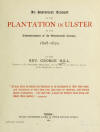

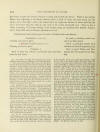
|
|
1630
|
Oliver
Owdny and Nicholas Owdny both were
listed
on this year's Muster Roll as
living in the nearby barony of Tullyhunco, County Cavan, under Sir
Francis Hamilton. Not coincidentally, perhaps, one Nicholas Widney died
in 1731 possessed of a certain property in County Monaghan -
see
: 1731
below. [The spelling Owdny had been used in Scotland
in 1518 and 1630, as appears in document extracts at the
National Archives of Scotland, one being a charter given by
Raynald Owdny of that Ilk].
1630 Muster Roll of
County Cavan, Extracts from LDS #1279327, Item 6, appearing
at:
http://freepages.genealogy.rootsweb.ancestry.com/~adrian/Must1630.htm
|
|
1653
|
Lieutenant Woodney [first name not recorded] was among Scots
Presbyterian landholders of Lecale,8 County Down who were
proposed to be transplanted to Leinster and Munster in order
to promote Protestantism in the south of Ireland.
There is no indication as to whether the move
actually occurred.
County Down is on the eastern border of County Armagh and
not far removed from Monaghan.
The Anglo-Norman Families of Lecale in the
County
of Down,
J.W.H., Ulster Journal of Archaeology,
Vol. I, Belfast (1853), p. 98
|
|
1713
|
On 23 June, James Widney was one of four Commissioners for
"a people in Trewgh [Trough], a part of the congregation of Kinaird, in the Prebry
[Presbytery] of Monaghan", asking the General Synod of the
Presbyterian Church of Ireland that they be erected into a
new congregation separate from Kinaird. The
request was granted, and the new congregation was
"... indiscriminately called Treugh or Scarnagiroch",
officially named Glennan, but
"also known by the name of Glasslough".2
History of Congregations of the Presbyterian Church in
Ireland, Rev. W. D. Killen, D.D., Belfast and Edinburgh
(1886), p. 153
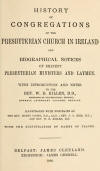
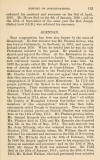
|
|
1724
|
James Widney the elder and James Widney the younger, "Both of Kill[y]murry
in the Parish of Erigle Barony of Truegh [Trough] and County
of Monaghan", were parties to a deed dated 11 May 1724
which was contingent upon
the marriage of the younger James to Ann Carlile, niece of Thomas
Donaldson. In consideration of the marriage: (1) James
Widney the elder gave
“unto his said Son James Widney the younger as a Patramony
the one Half of the town lands of Killamurry”; and (2)
Thomas Donaldson agreed to pay to James the younger “as a
marriage Portione the sum of Fifty Pounds Ster[ling]”.
Killymurry is a townland in Monaghan, very near
Emyvale; see
: 1779 and 1784 below.
Registry of Deed Grantors, Book 121, p. 254,
Registered No. 82844
|
|
1731
|
A will was recorded in Clogher Diocese for Nicholas Widney
of Killymurry,4 County Monaghan.
Regrettably, Clogher and nearly all Northern Ireland
wills were destroyed, and all that remains are indices.
See also : 1724 above and 1796 below.
PRONI Pre-1858 Wills and Administrations: Clogher Diocese
Wills
|
|
1740
|
A will was recorded in Clogher Diocese for James Woodney of
Killymurry, County Monaghan.
PRONI Pre-1858 Wills and Administrations: Clogher Diocese
Wills
|
|
1745
|
"A
Memorial of a deed bearing date the Eleventh day of May one
thousand seven Hundred and twenty four" was attested to by John Erwin, one of the 1724
witnesses (image and transcript above). The
deed being memorialized five years after the will of James
"Woodney" of Killymury was recorded suggests that the 1740
James Woodney was one and the same as the 1724 James Widney
the elder.
Registry of Deed Grantors, Book 121, p. 254,
Registered No. 82844
|
|
1758
|
In January, Margaret Widney was born "near Emyvale"3
in County Monaghan,
as related in a memoir authored by her son Samuel
Williams.
Margaret was married to William Williams.
Since Emyvale is less
than two miles from Killymurry, Samuel’s account
provides good supporting evidence for the Widneys actually
living in the
rural townland of
Killymurry when Margaret was born.
Leaves from an Autobiography, Samuel Williams [son
of Margaret (Widney) Williams], The
Ladies Repository (1851)
|
|
1761 |
Beginning 1 November of this year and
for the term of three lives or 37 years, James Widney was
leased 70 acres of Mallydermott [Mulladermot], part of the
lands of Glasslough and Emy owned by the Estate of Charles Powell Lesle
[Leslie]
in County Monaghan.5
"The Dublin Journal", Thursday,
27 June 1861
|
|
1766
|
John Widney, brother of immigrant James Widney born 1753, later
wrote in his family Bible that he was born in "the County of
Monahan in Ireland" on 9 February of this year.
https://www.wikitree.com/index.php?title=Widney-28&public=1
: WikiTree Profile of John Widney including an image of his
family Bible
|
|
1779
|
Margaret Widney "of Emyvale", married William
Williams in Glaslough.
The Groves, Lappan; [Monaghan County,
Ireland]. An Account of a Pilgrimage Thither,
John Fletcher Williams, Saint Paul (1889), pp. 25, 58
|
|
1784
|
James Widney of Killymurry sold his lease for lands of
Killmurry, County Monaghan containing 39 acres, 3 rods, and
15 perches, to John Sparrow and William Armstrong. The
price which James received was 119£ 8sh. 9p.; and two
of the witnesses to the "Indented deed of Assignment" John Wilson, gentleman, and Ann
Wilson of Emyvale.
This was the very year James Widney and his wife, Ann Erwin,
left Ireland for the U.S. and four years before James's
sister Sarah Widney
followed, along with her husband, Hugh Linn, and three of their children.
Registry of Deed Grantors, 1708-1785, Book 368, p.
65, Registered No. 246042
|
|
|
 |
1784 Deed as Memorialized in
1785
Transcript |
1796 |
Alexander Widney was a flax grower in Errigal Trough,12 County
Monaghan, appearing on the flax growers bounty list this
year.
Errigal Trough is a civil parish in the northeast
corner of County Monaghan and includes the townlands of
Errigal Trough and Killymurry;
see also : 1713 and
1731 above.
Flax Growers Bounty List of 1796, The Irish Linen Board
|
________________________________________
vObservations
Observations
|
1.
|
The Scottish name of Udny or Udney is pronounced and
sometimes written as Widney.
|
|
2. |
Oliver Udney fought in a Scots Brigade attached to the Dutch
army and appears in his Brigade history as both Udney and
Wodney; this was
69 years prior to the Boyne. He subsequently held land in County Cavan but not in County Tyrone.
|
|
3.
|
Woodney, a recognized form of the name Widney, appears in
Ulster 37 years prior to the Battle of the Boyne,
and as a member of the military.
This man was a Scots Presbyterian and lived at least
for a time in County Down.
|
|
4.
|
Twenty-one years following
the
Battle of the Boyne, a Woodney child recognized by Widney
researchers as a member of this family was baptized.
The Presbyterian Church baptizes infants and young children,
but the Methodists do not.
|
| 5. |
The Presbyterian Church in Ireland was
founded in the 17th century by Scottish immigrants to
Ireland while
Methodism, to which the Widneys later converted, did not arrive
in Ireland until the mid-18th century.
History of
Congregations of the Presbyterian Church in Ireland,
Ibid.
http://www.irishmethodist.org/about/history.php
|
|
6.
|
The first surviving Ulster record in which the name is
written "Widney" is
dated 23 years after the Battle of the Boyne and notes that
James Widney then represented the Presbytery of Monaghan,
specifically the people in Trough. According to Dr.
Linn's account, County Monaghan was the home of the mother
of siblings James Widney and Sarah Widney, each born 40 and
44 years, respectively, following the 1713 record.
Monaghan lies between Cavan in the South and Tyrone in the
North.
http://www.wesleyjohnston.com/users/ireland/geography/counties.html
|
7.
|
The Widneys have not been found anywhere - other than in Dr.
Linn's account - as having title to or possession of any
property in County Tyrone. However, one James Widney
did have a half-interest in Killymurry, County Monaghan,
which he sold the very year our James Widney came to the
U.S.
|
8.
|
While the names Oliver and Nicholas are uncommon
to Ireland, (1) the name Oliver appears in County Cavan as Oliver
Udny in 1621 and as Oliver Owdny in 1630, and (2) the name Nicholas appears in
County Cavan as Nicholas Owdny in 1630 and in County Monaghan as Nicholas
Widney in 1731.
|
9.
|
The 1731 Nicholas Widney and 1740 James Woodney both were designated
as
"of Killymurry" in their respective wills, the
latter presumably being the same person as the 1724 James
Widney the Elder of Killymurry, who had then deeded
Killymurry to his son James Widney the younger of
Killymurry. The 1724 deed was memorialized in February
1745, by affidavit of one of the 1724 witnesses, and very
probably represents the legal establishment of James the
younger's title following the death of his father. A
later James Widney, born in 1753, sold Killymurry in 1784,
the very year he emigrated to Pennsylvania.
|
________________________________________
Conclusion
Conclusion
It is clear from the foregoing record that
the name Widney/Woodney began as Udny/Udney. Since the first
occurrence of Udney in Irish records is in 1621 and the first
Woodney in 1653, it is also certain that Widney ancestors were in
Ireland long before the 1690 Battle of the Boyne. That fact
does not entirely negate Dr. Linn's account. Rather, given
especially the military history of the
first Udney and first Woodney in Ireland, the Ulster family
certainly may have produced a Colonel Widney who helped
secure the victory for William of Orange in that historic conflict.
Documents and records discovered thus far further prove that the Ulster family originated specifically with
Oliver Udney or Owdny of Cran in County Cavan, but formerly of Aberdeenshire,
Scotland; further, that it: (1) continued with Nicholas Owdny,
probably Oliver's son, in
County Cavan; (2) included grandsons or other direct descendants named Nicholas
Widney and James Widney in Killymurry, County Monaghan; and (3) ended with
a later James Widney selling Killymurry, County Monaghan in order to
emigrate to America
Clearly also, there were several Widney generations named James, the earliest being a
1713 County Monaghan Presbyterian elder. Following 1713, all
the known records of a James Widney or Woodney in County Monaghan are: (1)
James Widney the Elder of Killymurry in 1724, deceased in 1740; (2) James
Widney the Younger of Killymurry in 1724, the father in the
1744 lease; (3) James the son in the 1744 lease; and (4) James the
1784 seller of Killymurry (born 1753 by Dr. Linn's account).
One question remains: did the family in fact own an estate in County
Tyrone? No documents or records have been discovered that prove it
is so.
________________________________________
OTHER WIDNEYS IN ULSTER
|
1711
|
William Woodnay, son of Jamie Woodnay,
was baptized in Upper Massereene,10
Glenavy Parish, County Antrim.
Glenavy is just inside County Antrim at the border
with County Down.
Public Records of Northern
Ireland [PRONI] Ref. No. T679/1: 1707-1784 Baptism Records
|
|
1726
|
Hugh Woodney in Newry Parish, County
Armagh applied to register a freehold in the townland of
Lisdrumliska.7
Newry Parish is divided between Armagh and Down.
See : 1778 below.
County of Armagh Register of
Notices of Applications to Register Freeholds, p. 69
|
|
17__
|
Alexander Woodney of Newry Parish
married Elizabeth Carlile, who was born in 1704.
"Old
Families of Newry", R. S. J. Clarke, Ulster Historical
Foundation, Belfast (1993), p. 20
|
|
1740
|
James Wadney was a Protestant
householder in Macosquin11,
Barony of Coleraine, County Londonderry.
PRONI 1740
Protestant Householders
|
|
1741
|
A will was recorded in Derry Diocese for
John Widney, yeoman, of Macosquin, County Derry/Londonderry,
barony of Coleraine.
Indexes to Irish Wills, Vol. V -
Derry and Raphoe, Ed. Gertrude Thrift, London (1920), p. 149
|
|
1754
|
Alexander Widney reportedly married Mary
Reed in County Armagh.
[While reported to be in LDS
records, this author has not personally seen a source for
the marriage.]
|
|
1758
|
On 21 December, John Widney, merchant in
Blackwatertown, County Armagh, was party to a 14-year lease
for land, with a clause for renewal, in Blackwatertown.6
PRONI Ref. No. D526/2E/9
|
|
1775
|
Hugh Woodney of Newry Parish, Counties
Armagh and Down, signed a Protestant Dissenters Petition.
PRONI 1775 Dissenters Petitions
|
|
1778
|
On 30 October, Hugh Woodney of Newry
Parish leased lands of Ballynacraig9
in County Down from Ross Moore of Carlingford, County Louth.
PRONI Ref. No. D4066/8
|
________________________________________
Geographical Notes
Map and Geographical Notes
|
1.1
|
Cran, leased by Oliver Udny in 1621, is a townland in County Cavan
which contains 218 acres near the border with County Monaghan. Cavan and Monaghan both
are part of the historic province of Ulster. Cran itself is only
15 miles southwest of Newry, County Down and 38 miles southwest of Killymurry, County
Monaghan. Widneys/ Woodneys are later found in both
Newry and Killymurry.
|
Cran to Mulladermot |
|
2.2
|
Glaslough is a village in the civil parish of Errigal
Trough, County Monaghan, which was both (1) an
alternate name for the Presbyterian church founded
there upon application of James Widney and others in 1713 and
(2) the home of the man who
married Margaret Widney of Emyvale in 1779.
|
|
3.3
|
Emyvale, the home of Margaret Widney in 1779, is a town lying three and
one-half miles northwest of Glaslough and less than two miles
south-southwest of Killymurry.
|
|
4.4
|
Killymurry is a townland in the civil parish of
Errigal Trough containing 133 acres and lying two miles north-northeast of Emyvale
and four miles north-northwest of Glaslough.
Nicholas Widney died there about 1731 and James
Widney I about 1740. Killymurry is roughly a mile
south of the southern border of County Tyrone.
|
|
5.5
|
Mulladermot is a townland of 119 acres, which lies
a half mile north-northwest of Killymurry.
James Widney leased 70 acres of Mulladermot in 1761.
|
|
6.6
|
Blackwatertown is a townland in County Armagh lying 14 miles
northeast of Killymurry. John Widney leased land there
in 1758.
|
|
7.7
|
Lisdrumliska is a townland in County Armagh lying 32 miles southeast of Glaslough and very near the border with
County Down. It was the location of a freehold
registered by Hugh Woodney in 1726.
|
|
8.8
|
Lecale is a barony in County Down, roughly 30 miles
east-southeast of Glaslough. It was the home of
Lieutenant Woodney in 1653.
|
|
9.9
|
Ballynacraig is a townland in County Down, now absorbed by
the present-day town of Newry and lying a few miles from
Lisdrumliska.
In 1778, lands there were leased by Hugh Woodney of Newry
Parish.
|
|
.10
|
Upper Massereene, where William Woodnay, son of Jamie
Woodnay, was baptized in 1711, is a barony in County Antrim
lying roughly fifty-eight miles northeast of Glaslough.
|
|
.11
|
Macosquin, where James Wadney was a Protestant
householder in 1740 and John Widney, yeoman, died about 1741, is a
village and townland in County Derry [Londonderry]
lying sixty-two miles north of Glaslough.
|
|
.12
|
Errigal Trough is a townland and civil parish in the far north corner of County
Monaghan. It includes the townland of Killymurry,
where Alexander Widney was a flax grower in
1796.
|
_________________________________________________________________________________________________________________
Genealogy of the Widney / Udny Family of Scotland and
Ireland
_________________________________________________________________________________________________________________
Account Book of
the Battle of the Boyne
Account Book of the Battle of the Boyne
Since taking her first steps on the Widney genealogical journey thirty years ago, this author has often wondered
why there was no historic record documenting
the troops, or at least the officers, who fought for William of
Orange at the Battle of the Boyne. Surely the victorious, new
King had an account of this most historic, decisive engagement of
his campaign. Sometimes, however, she despaired - thinking
such record likely was destroyed in one of the many burnings in the
centuries-long Irish conflict.
Then, news of a discovery in Ireland gave
hope. Amazingly, a 320-year-old account book had been
sitting forgotten among other artifacts in
the Belfast City Hall
for at least a
century and was finally found during renovations to the building.
The paymaster's account book for the Battle of the Boyne was presented to the
Orange Order, which in November 2012 finished digitally
photographing the entire book and was "assessing
the best means of presentation" with
"the
intention to add to [it] the alphabetical database of surnames ..."
In March 2013, it was announced that the Orange Order's Archives
would be
temporarily closed to prepare for the building of an interpretive
center and the creation of a new website.
As soon as word is received as to the availability
of the images and data, a notice will be added here. Linn and Widney descendants
are eager to know if Colonel Widney - by whatever spelling - appears
among those men named in the Paymaster General's Account Book for
the Battle of the Boyne.
http://news.bbc.co.uk/2/hi/uk_news/northern_ireland/8323461.stm
http://www.rootschat.com/forum/index.php?topic=562709.0
___________________________________________________________________
As with Widney/Woodney/Udney, the spellings Linn
and Lynn are interchangeable, along with certain other variant
spellings. Lynn/Lynne was the earliest spelling in
Ulster for Scots of the name, and descendants of Sarah Widney and Hugh Linn may be interested in a discussion of the first
Ulster Scottish Lynns at "Lynns of Londonderry, Donegal, and
Tyrone".

For extensive collections of the history of Lynns, Linns,
Linds, etc.
in Scotland and Ulster, see
Book Excerpts on CDs.
U P
House of Lynn
Contact
______________________________________________________
|















